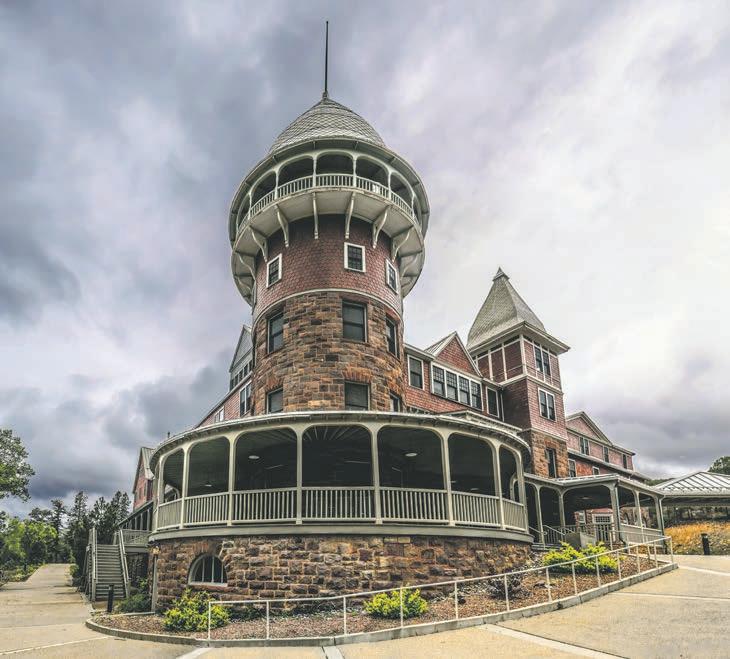
2 minute read
Finding Waldo Among the Mines
Waldo Canyon Road, Cerrillos
To reach Waldo, you first have to summit Devil’s Throne.
Advertisement
Located some two miles west of Cerrillos along County Road 57, that hairpin path’s demonic name comes from the now-ghost town’s former life as a strategically important stop along the Atchison, Topeka and Santa Fe Railway—when so much traffic came through the area that the road to Waldo was lit up all night like the mouth of Hades by Model Ts carefully reversing their way up the daunting slope. Today, the only other traveler is a turkey vulture circling above the stripped village. But what’s left of Waldo boasts a beautiful, curving geometry that belies its dark present.
Waldo itself (named for territorial Supreme Court Justice Henry L. Waldo, rather than the candy-striped character) could more accurately be described as two towns. The initial settlement, dating from sometime in the early 1800s, packed up and moved from its original location (at the base of the nearby rock formation) when the ATSF laid new tracks closer to the Waldo gorge—making Waldo the crucial connecting point between the Madrid spur and the main east-west line.


“The railroad put in, in 1879, a dam up the arroyo, and there’s a cast iron pipe that came to the railroad track,” Todd Brown, president of the Cerrillos Historical Society and owner of the Cerrillos Turquoise Mining Museum, explains. “The line went along the railroad to Waldo, and they had a water tank there and they brought the water up to Madrid.”
That water helped fuel the mining boom further south (we imagine it’s pretty hard to wield a pickaxe when dehydrated). But equally important to the town’s development was what Madrid supplied to Waldo: Anthracite.
“Anthracite is hard coal,” Brown tells SFR. “The train uses soft coal, people in their houses use soft coal, but anthracite, you have to heat it up and smother it to bring out the oil.”
That carcinogen-intensive process is responsible for the most striking remains left in Waldo—a honeycomb of interconnected coke ovens which visually form a fractal stretching out towards the horizon. Without knowing the history, this curving sandstone appears more in keeping with much ed online showed smoke billowing behind the castle, the campus stood unscathed and reopened about four weeks later. Classes ended the third week of May this year with zero days of mandatory evacuation.
Irfan Ayub, of Afghanistan, lived in the castle this last school year. He tells SFR the castle provides a quiet place to focus on learning. “It’s really big. It’s a good place to study with no distractions,” he says. “Everybody just kind of spreads out to do their own thing. It’s pretty quiet and isolated.”
And the fourth floor? “We can’t go there,” he says with a sly grin. “The door is closed.”
(Julie Ann Grimm)
older structures at Bandelier National Monument or Chaco Canyon National Historic Park than with the gold rushera clapboard of Cerrillos. But in their prime, Waldo’s ovens fed steel mills from El Paso to Pueblo. With time and the eventual help of Works Progress Administration labor, a schoolhouse was added to the settlement—as well as a lead paint factory.
“They never cleaned it up,” Brown comments. “The Environmental Protection Agency didn’t think it was polluted enough.”
But while no actual restoration work was performed, just about everything else in Waldo was picked clean when the coal industry went bust. The train station itself was even lifted up and rolled on logs down to Cerrillos (where it’s been repurposed as a private residence)—leaving its founda-










